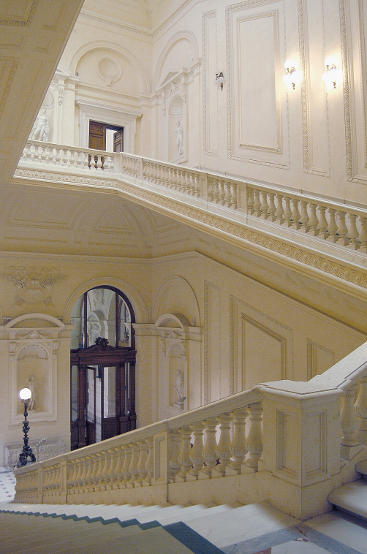The Bank of Italy has decided not to present its art collection in traditional book format (which would require many volumes to describe all the works in today's catalogue) but instead to create a digital archive that can be consulted on the Bank's website.
The idea is to make it easier to view a collection that first took shape with the acquisition in 1930 of the works of art amassed by the failed entrepreneur Gualino and has since been built up over the years with careful periodical purchases intended to fill the most significant gaps at the best prices the market can offer. Moving on from the masterpieces of oriental art in the Gualino Collection, the Bank has designed its own collection to follow the evolution of Italian art while also ideally making a contribution to its development.
Art enthusiasts everywhere can now enter a veritable museum which, although small, spans centuries and continents, offering the whole of this precious documentation to a previously excluded public.
The material covered in the twenty ‘tours' available on the website is organized so as to highlight specific groupings with clear historical and critical attributes, without betraying the complex and diverse nature of works collected at different periods of time.
Taking the theme of ‘collecting' as starting point, given that the Bank's works of art originated from a private collection, this catalogue (which includes works ranging from painting, to sculpture, to tapestries) continues through a series of tours that move from the ancient world to the Renaissance and from that crucial point venture onwards to the seventeenth and eighteenth centuries focusing on different forms of landscape and veduta.
The collection also contains many examples of the different conflicting, opposing and cross-pollinating trends of the nineteenth and twentieth centuries, from Neoclassicism to Divisionism and from the historical Avant-garde to the artistic movements of the interwar years, with a specific area devoted to de Pisis, Morandi and Pirandello, three very influential figures, although outsiders with respect to the artistic environment of twentieth-century Italy.
The final tours concentrate on the opening up to knowledge and to international exchange that followed the end of a regime which had pursued an ill-judged policy of autarky also in the spheres of culture and art. The new developments and the fresh contrasts between figurative, abstract and informal expressions are the subject of the tours that take in major works from Italy's lively postwar period before moving on to the diverse artistic forms of the 1960s and following decades.
The selection of paintings and sculptures included in the catalogue presented today is an indication of how broad the criteria informing additions to the collection have become over the years. It is a collection to which important and scholarly exhibitions refer more and more often, requesting the loan of specific pieces and authorization to reproduce them.
Fabrizio D'Amico
Antonio Del Guercio
Augusta Monferini
Alessandro Zuccari

